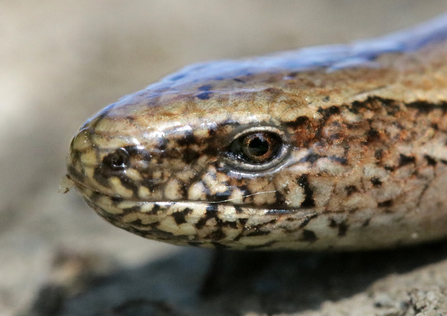Last year we changed our approach at Foxburrow and decided to bring the arable fields that had been tenanted for many years into our control. The driver for doing so is the ever increasing need to do everything possible to address the climate and nature crisis we are facing. Making more space for nature is essential, and as an environmental charity owning 84 acres of conventionally farmed arable land, it felt like an obvious decision that we should be bold and use this land to benefit wildlife and people.
2021 was the last harvest and since then all arable cultivation has stopped and the land has initially been fallowed. Since then, we have taken advantage of a number of opportunities to learn more about the land and kick-start the transformation of the nature reserve.
With 84 acres of stubble, there was a window of opportunity to see what the land might reveal about the past. With the amazing help of the Suffolk Archaeological Field Group, several of the fields were ‘walked’ with expert eyes scanning the bare ground for anything that might tell us more about the past. In addition, several of the group who specialise in archaeological metal detecting also assisted. Foxburrow certainly didn’t disappoint with a fascinating selection of finds spanning more than 4,000 years. They ranged from Neolithic worked flints, Bronze Age fragments of axe heads, coins of various ages and a remarkable seal from a bag of Peruvian guano that would have been imported as fertiliser in the 19th Century.
The Trust also has access to funding for pond restoration and creation and this has been used to great effect excavating three new ponds and restoring one pond. Since that first phase, another pond has since been dug and an impressive ‘invertebrate cliff’ created by excavating a shallow depression and leaving a south-facing vertical face almost a metre high. The sandy soil in this location is perfect for bees, wasps and other insects to burrow into, so it will be fascinating to watch the colonisation in the coming years.
Foxburrow now has a new population of slow worms that have been translocated from a development site in east Suffolk. The development could only progress if a suitable donor site could be found for the slow worms and we were pleased to help.
Looking ahead, the vision for Foxburrow is to create a complex patchwork of habitats including woodland, scrub and grassland dotted with ponds and other features that benefit wildlife across the former arable fields. This will be achieved through simply allowing nature to take the lead and naturally transform the landscape. There will be no planting or large-scale interventions other than at some point in the next few years, extensive grazing will be introduced to help maintain a mosaic of open and more wooded habitats.
Parts of Foxburrow will remain core to the Trust’s livestock grazing management programme providing important ‘back-up’ grazing for livestock that are not otherwise out on one of our other local reserves. And, most importantly, Foxburrow will remain a wonderful place for people of all ages to visit and learn more about our natural world, or simply enjoy an abundance of wildlife.

